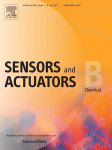Summary: Carbon nanotubes (CNTs) are one of the advanced functional materials of today and has been researched extensively since its discovery. Although much is still not known about the physical and chemical properties of CNTs, it has already found potential applications in many industries, from defense to electronics and even in environmental remediation. CNTs possess many desirable mechanical and chemical properties, which supercedes many of the advanced materials of today. It was also found that CNTs have excellent electronic properties like unprecedented mobilities of up to 100,000 cm2/V s, which can potentially result in a quantum leap in the electronics industry. Over the recent years, CNT and their derivatives (decorated/functionalized) were also intensively studied, especially in the field of bio and chemical sensing owing to the size similarity of nanotubes with the analytes such as biospecies that enable strong interactions between them. However, despite intensive research, commercialization of these potential applications still remains elusive mainly due to the lack of control in synthesis of specific chirality, diameter and length of CNTs, which influences the device performance. This short review focuses on addressing recent advances in CNT research especially on aspects such as controlled synthesis, decoration/functionalization for specific recognition, sensor device fabrication and commercialization strategies.
A Review on Technological Aspects Influencing Commercialization of Carbon Nanotube Sensors
